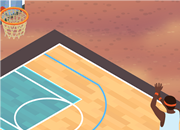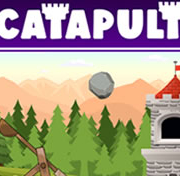The Continents Science Game
This science game helps children learn more about the continents. People have lived on continents throughout history. Where are they from? What is their motivation for moving? How many people are they? What is their movement pattern? These are the questions we'll answer in this article. Continue reading to learn more about continents.
Where the word Continent comes from
The term continent was originally used to describe small areas that were not separated from the seas. The term is still used widely today, but geographers once doubted the necessity of continents. Peter Heylin, in his Cosmography, defined a continent to be a large area of land. According to his definition, a continental area included Europe, Asia, and Africa. Ephraim Chambers, another geographer, stated in his Cyclopaedia, that the world is divided into Asia and Africa. More than half the surface of the earth is covered by continents. Some geographers view the two continents together, while others see them as separate continents. While the former United States is divided into the North and South, many parts of Europe can be considered one continent. Both Latin American and European countries consider their land one continent. The continents in North America and Antarctica are distinct.
Origin
There are many theories about how ocean basins and continents formed. However, the oceans and continents are two of the most important features of our planet. The oceans currently cover 70.8 percent of the Earth's surface. While the continents account for 29.2 percent, they make up the remainder of the planet's remaining surface.
There are two main theories regarding the origins of the continents. One is that the earth is a sphere enclosed by water. Rodinia was the first supercontinent, but it wasn't the first. Another theory states that Pannotia was the second supercontinent. It lasted 60 million years before crashing into Gondwana or Proto-Laurasia. Laurentia was then referred to, and later split into Siberia or the Baltic.
Population
The seven largest continents in the world are Asia, Australia and Africa. Nearly 60% of the world's population is located in Asia, which also accounts for one third of the planet's total land area. Two continents make up the Americas: North and South America. Some countries, like Central America, the Caribbean and Greenland are also included in North America.
Asia is the most populous continent, followed closely by South America and Africa. In 43 years, Africa's population is expected to increase by a third to one billion. By 2050, the world's fertility rate will fall to just two children per woman. The Middle East is not included in the most recent statistics, as it is not often included in Asia. The population of these two continents could reach 7.8 billion or 10.8 billion, depending on how you slice it.
Movement
Continents are slower than ocean floors, and can only jump 20 centimeters per annum. But this doesn't mean continents cannot move quickly. Scientists aren't sure if continents will ever move in 50 million year time. In fact, they have not turned 180 degrees over the course of ten millions years.
Wegener had earlier proposed a theory known as continental drift that explained how continents move across the Earth’s surface. His model showed that the continents of Pangaea split and then moved slowly north to where they are now. Tectonic plates, which are large slabs of rock that make up the lithosphere and are covered by the sea, are massive chunks of rock. The heat from the Earth's crust softens the rock beneath these plates, which causes them to shift and move under the influence of convective forces.
Shield areas
Most continents are covered by precambrian shield areas. These include the Australian, African, and Canadian shields, as well as vast areas of granite and gneisses. They are located in the same area as sedimentary belts like the Pacific Rim or the European Alps. The Precambrian saw the Caledonian Orogeny in North America, which created tectonic and metamorphic events along North America's east coast. Shield Areas also include the Variscan and Hercynian orogenies that affected Europe and the Ural Mountains.
Localization
You will hear the term "locations of the continents" if you are interested in geography. You will discover that continents are large tracts of land separated from each other by oceans, regardless of whether you are an expert or beginner in geography. These continents are distinguished by their size, shape, and geographic location on the globe. The Earth's surface is horizontally marked by the equator. The longitude lines, on the other hand, run from top-to-bottom. The middle line of longitude runs from Europe to Africa through the continents England and Africa.
Geographic regions do not always correspond with the continents. There are seven continents, which are the major land masses of Earth. They were once divided according to geographic conventions. Today geologists consider seven regions independent continents. Other regions are not included under one continent. This is why Zealandia has been called a continent.











